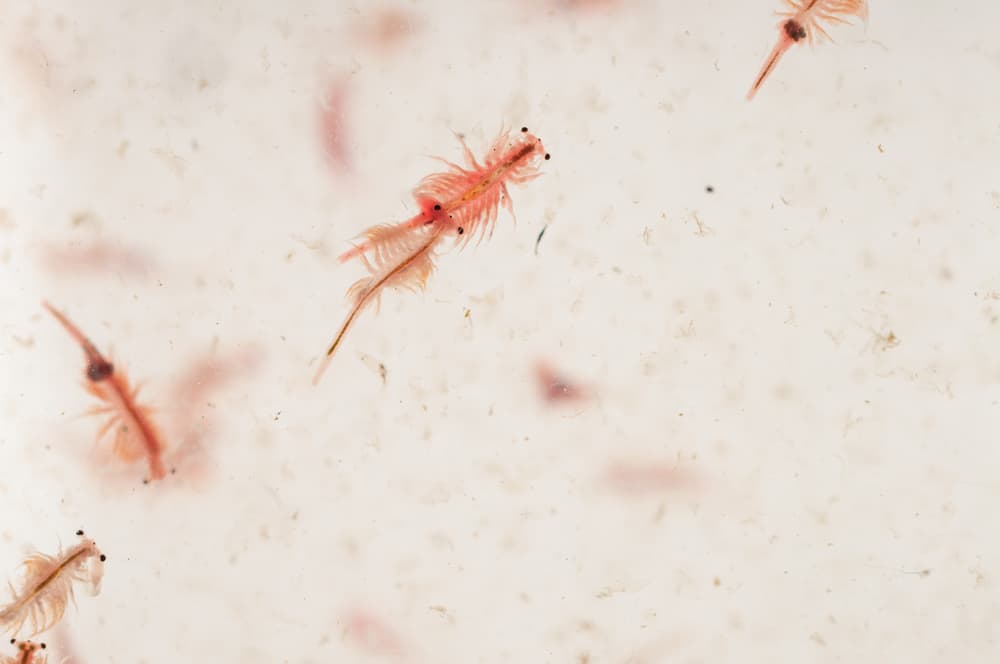Brine shrimp, also known as sea monkeys or artemia, are small crustaceans that are commonly used as live feed for fish in aquariums They are easy to hatch and breed, making them a convenient food source However, some aquarists have noticed that brine shrimp will eat each other under certain conditions. So do brine shrimp really exhibit cannibalistic behavior?
An Overview of Brine Shrimp
Brine shrimp belong to the genus Artemia and there are several species that are commonly used in aquaculture. The two most popular species are Artemia salina and Artemia franciscana. These tiny crustaceans average about 8-10 mm in length as adults.
Brine shrimp are adapted to living in salty waters with high salinity, which is why they thrive in aquarium saltwater hatcheries. In the wild, they are found in inland salt lakes and coastal salt pans. Their larvae exist in dormant cyst form which allows them to remain in dormancy for long periods until the cysts are rehydrated in salt water to hatch the larvae.
The lifecycle of brine shrimp is short just a few weeks from larval form to reaching maturity. They feed on microalgae, yeasts bacteria and tiny aquatic organisms. Brine shrimp are nutritious live feed, containing protein, lipids, and essential fatty acids needed by developing fish larvae.
Reasons Why Brine Shrimp May Resort to Cannibalism
In their natural habitat, brine shrimp feed on microorganisms and do not typically show cannibalistic tendencies. However, in a controlled hatchery environment such as in home aquariums, brine shrimp may be driven to cannibalism for the following reasons:
Overcrowding
When brine shrimp are hatched in densities that exceed the tank capacity they can quickly run out of the microalgae and nutrients needed to sustain the rapidly multiplying population. This overcrowding and competition for limited resources can lead the brine shrimp to turn on each other for nourishment.
Starvation
Related to overcrowding, starvation can trigger cannibalism in brine shrimp cultures. This typically occurs if the brine shrimp larvae fully absorb their yolk sac before there is adequate microalgae or other food sources introduced into the hatchery. The brine shrimp may turn to eating each other as a means of survival.
Life Stage
Younger brine shrimp larvae that still have their nutritious yolk sacs intact tend to be more vulnerable to cannibalism by older brine shrimp who have already absorbed their yolk sac and require external nourishment. The older brine shrimp will target the younger nutritious shrimp.
Predatory Instinct
Under starvation conditions, the natural predatory instincts of brine shrimp may kick in and drive them to consume each other for sustenance. These shrimp have been known to exhibit predatory behavior on rotifers and protozoa under scarce food availability.
Environmental Stressors
Suboptimal environmental conditions such as inappropriate salinity, temperature, or pH can stress brine shrimp populations and potentially lead to cannibalistic tendencies, as the shrimp become desperate for nutrients.
Overfeeding By Fish
In aquarium settings where brine shrimp are fed on by fish, the fish may not fully consume all the live shrimp supplied in a feeding session. Uneaten living brine shrimp may then attack their weakened counterparts that have been nipped on by fish but not fully eaten.
Signs of Cannibalism in Brine Shrimp Cultures
If your brine shrimp culture starts exhibiting unusual behaviors, shrinks in population size, or declines in overall health, cannibalism may be taking place. Some signs to watch out for include:
- Presence of empty brine shrimp molts or exoskeleton fragments
- Damaged brine shrimp individuals showing loss of appendages
- Observation of actual cannibalistic behavior of brine shrimp consuming each other
- Declining brine shrimp density and population crash
- Increased water turbidity from dead brine shrimp remains
- Visible size differences indicating older shrimp attacking younger shrimp
Preventing Brine Shrimp Cannibalism
Even though some cannibalism might be unavoidable, there are things you can do to make it less likely that brine shrimp in your aquarium hatchery will eat each other:
-
Avoid overcrowding. Monitor population density and hatch brine shrimp in appropriate densities.
-
Introduce food sources early. Provide microalgae, yeast, egg yolk, or commercial feeds to the larvae once they absorb their yolk sac.
-
Maintain optimal conditions. Keep things like temperature, pH, and salinity in the right range for brine shrimp.
-
Use air pumps and lighting. Proper aeration and lighting fosters algae and infusoria growth to feed the brine shrimp.
-
Harvest frequently. Remove brine shrimp within 2-3 days before overcrowding occurs.
-
Segregate by size. Separate younger shrimp from larger ones using partitioning or nets.
-
Feed adequate densities. When feeding fish, provide enough brine shrimp so all are rapidly consumed.
While cannibalism does occur in overcrowded, nutritionally deprived brine shrimp cultures, taking the proper hatchery precautions can help prevent shrimp from resorting to this behavior. Maintaining optimal conditions, avoiding overcrowding, and harvesting at the right larval stage are key to raising a healthy brine shrimp colony free of cannibalistic tendencies. With the right balance, brine shrimp can serve as an excellent natural live feed for aquarium fish without exhibiting harmful behaviors like cannibalism.

